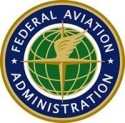Sat, Nov 13, 2010
Seeks To Prevent "Widespread Fatigue Damage" In Aircraft Over
75,000 Pounds
 The FAA has finalized a rule designed to protect most of
today's commercial planes and those designed in the future from
structural damage as they age, in what the agency calls a
continuing effort to address aging aircraft issues.
The FAA has finalized a rule designed to protect most of
today's commercial planes and those designed in the future from
structural damage as they age, in what the agency calls a
continuing effort to address aging aircraft issues.
The new rule seeks to prevent "widespread fatigue damage" (WFD) by
requiring aircraft manufacturers and certification applicants to
establish a number of flight cycles or hours a plane can operate
and be free from WFD without additional inspections for fatigue.
Manufacturers have between 18 and 60 months to comply depending on
the particular aircraft type.
Once manufacturers establish these limits, operators of affected
aircraft must incorporate them into their maintenance programs
within 30 to 72 months, depending on the model of aircraft. After
the limit is in the maintenance program, operators cannot fly the
aircraft beyond that point unless the FAA approves an extension of
the limit."
Safety is our highest priority. This rule provides a
comprehensive approach to the problem of widespread fatigue in
aging aircraft," said U.S. Transportation Secretary Ray LaHood.
"Requiring carriers to regularly inspect their aircraft for
possible fatigue is essential to ensuring the highest levels of
safety."
"We've addressed the problem of aging aircraft with numerous
targeted regulations and 100 airworthiness directives over the
years," said FAA Administrator Randy Babbitt. "This rule is a
comprehensive solution to ensure the structural safety of today's
airliners and the airplanes of tomorrow."

An airplane's metallic structures are stressed and can develop
cracks when they experience repeated loads such as the
pressurization and depressurization that happens on every flight.
While airlines regularly inspect aircraft for cracks exceeding a
certain size, WFD involves aircraft developing numerous tiny
cracks, none of which would have raised concerns individually but
which together run the risk of joining up and impairing the
structural integrity of the plane. The new regulation applies to
airliners with a takeoff weight of 75,000 lbs. and heavier. It also
applies to all transport designs certificated in the future.
The affected models, totaling 4,198 U.S.-registered airplanes,
are listed in the rule. The FAA is working closely with the
European Aviation Safety Agency (EASA) and other national
authorities to harmonize this rule with their regulations as much
as possible. EASA is now developing rulemaking to address WFD, and
the FAA participates in that process.
More News
Aero Linx: Commercial Aviation Safety Team (CAST) Founded in 1997, the Commercial Aviation Safety Team (USCAST) has developed an integrated, data-driven strategy to reduce the comm>[...]
Land And Hold Short Operations Operations that include simultaneous takeoffs and landings and/or simultaneous landings when a landing aircraft is able and is instructed by the cont>[...]
We're Everywhere... Thanks To You! Even with the vast resources and incredibly far-reaching scope of the Aero-News Network, every now and then a story that should be reported on sl>[...]
Pilot’s Inadvertent Use Of The Landing Gear Control Handle Instead Of The Flaps Selector Switch During The Landing Rollout Analysis: The pilot reported that during the landin>[...]
Also: Cosmonaut Kicked Out, Airbus Scales Back, AF Silver Star, Russian A-60 Clobbered A Samaritan’s Purse humanitarian flight was hijacked on Tuesday, December 2, while atte>[...]
 ANN's Daily Aero-Linx (12.12.25)
ANN's Daily Aero-Linx (12.12.25) ANN's Daily Aero-Term (12.12.25): Land And Hold Short Operations
ANN's Daily Aero-Term (12.12.25): Land And Hold Short Operations ANN FAQ: How Do I Become A News Spy?
ANN FAQ: How Do I Become A News Spy? NTSB Final Report: Cirrus Design Corp SF50
NTSB Final Report: Cirrus Design Corp SF50 Airborne 12.08.25: Samaritans Purse Hijack, FAA Med Relief, China Rocket Fail
Airborne 12.08.25: Samaritans Purse Hijack, FAA Med Relief, China Rocket Fail




